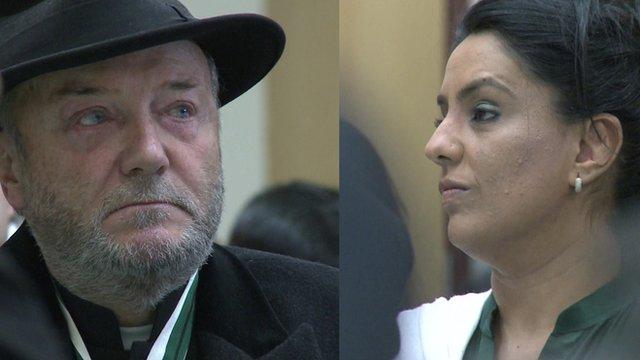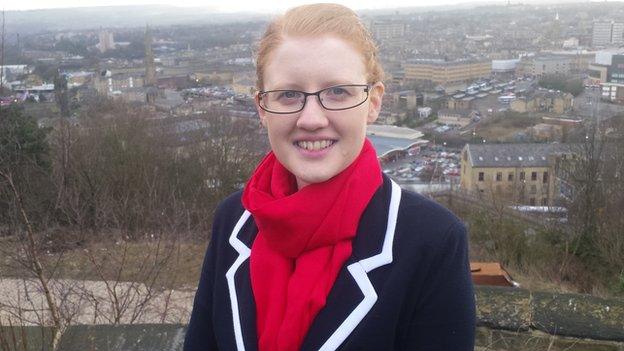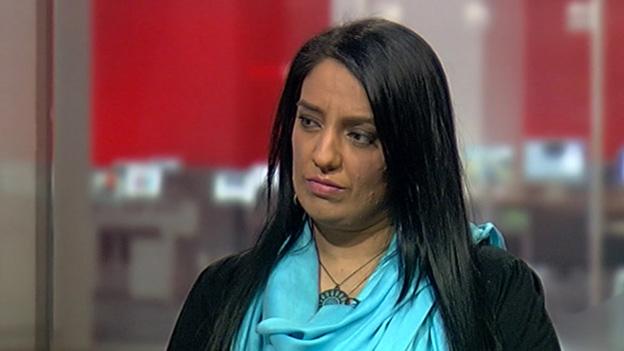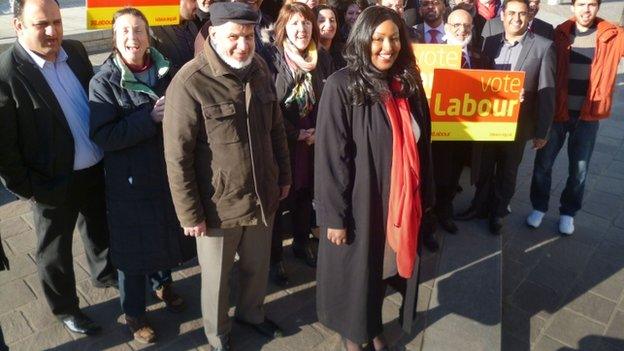Election 2015: Battle of M62 could be key to No 10
- Published

Labour is defending a slender majority of just over 1,400 in Halifax
A string of extremely close battles in marginal seats along the M62 corridor in West Yorkshire could provide the key to the front door of Number 10 at May's general election.
One sitting MP has a majority of less than 400, with six others defending leads of well under 3,000.
That means the tiniest of swings away from their parties could see the MPs packing up their desks and their party leaders spending several years on the back benches in opposition.
A look at how a dozen of these key marginals have performed since the 1990s shows the way they have changed hands is mirrored by changes in government.
There have been boundary changes but, based on the constituencies we have now, eight of them would have been Conservative after the 1992 general election and four Labour. That year John Major's government continued in power with a small majority.
After the 1997 Labour landslide, not a single Conservative MP survived in these seats.
Cleggmania effect
Fast forward to 2010 and to form a government the Conservatives knew they needed a national swing in their favour of a magnitude that would see their candidates take at least nine of the 12 West Yorkshire marginals. They finished up with just seven.
Labour successfully defended three and on the back of "Cleggmania" the Liberal Democrats finished up with two - and the coalition government was born.
Going into 2015, all these seats are going to be as fiercely fought as ever and once again are seen as vital reflections of the national fortunes of the parties.
Can Labour hang on in Morley and Outwood? Shadow chancellor Ed Balls is defending a lead of just 1,101.
Down the road in Halifax, a brand new Labour candidate, party worker Holly Lynch, inherits a majority of just 1,472 from retiring MP Linda Riordan.
Sitting Conservative MPs also have some slender leads to defend. Simon Revell took Dewsbury from Labour in 2010 by just 1,526 votes.
It is a similar story in Pudsey where Stuart Andrew came out ahead by 1,659. Former Bradford City Council leader Kris Hopkins finished up a mere 2,940 ahead of Labour in Keighley.

Bradford East Lib Dem MP David Ward was elected with the smallest majority in West Yorkshire - just 365
Will the two Liberal Democrats survive? Greg Mulholland took Leeds North West from Labour with a majority of 1,877 in 2005 and built it up to a relatively healthy cushion of 9,103 in 2010. Will that be enough?
Down the road in Bradford East, the 2010 General Election saw David Ward squeak in for the Liberal Democrats' second seat with West Yorkshire's smallest majority of 365.
UKIP, the Greens and the new Yorkshire First Party are also expected to field candidates in most of these important seats and have ambitions to take votes from the traditional frontrunners.
There are also a couple of other West Yorkshire contests that are worth watching even though they have never been seen as "swing" seats until recent years.
What had been the rock-solid Labour seat of Wakefield saw the then cabinet minister Mary Creagh pushed to the wire by the Conservatives with her majority squeezed to 1,613.
Then there is George Galloway. The Respect party leader humiliated Labour in the 2012 Bradford West by-election caused by the death of veteran Labour MP Marsha Singh. He wiped out Labour's fairly substantial lead and romped home with a 10,140 majority.
Since then his ambitions for the party have been curbed by internal strife and splits amongst its activists. Will that be enough to see Labour take back a seat it once saw as an unshakeable part of its heartland?
- Published26 March 2015

- Published21 March 2015

- Published2 March 2015

- Published27 February 2015
